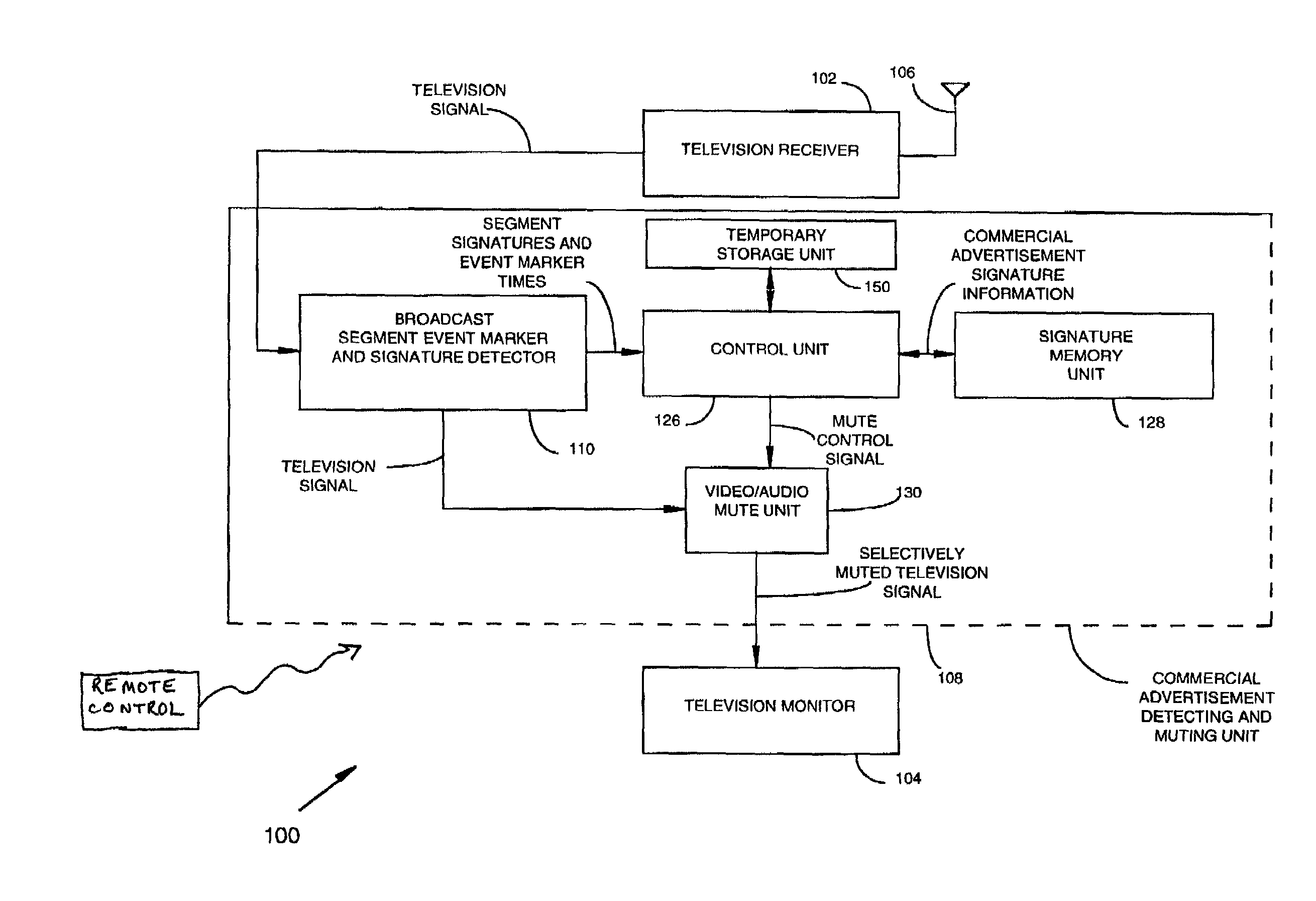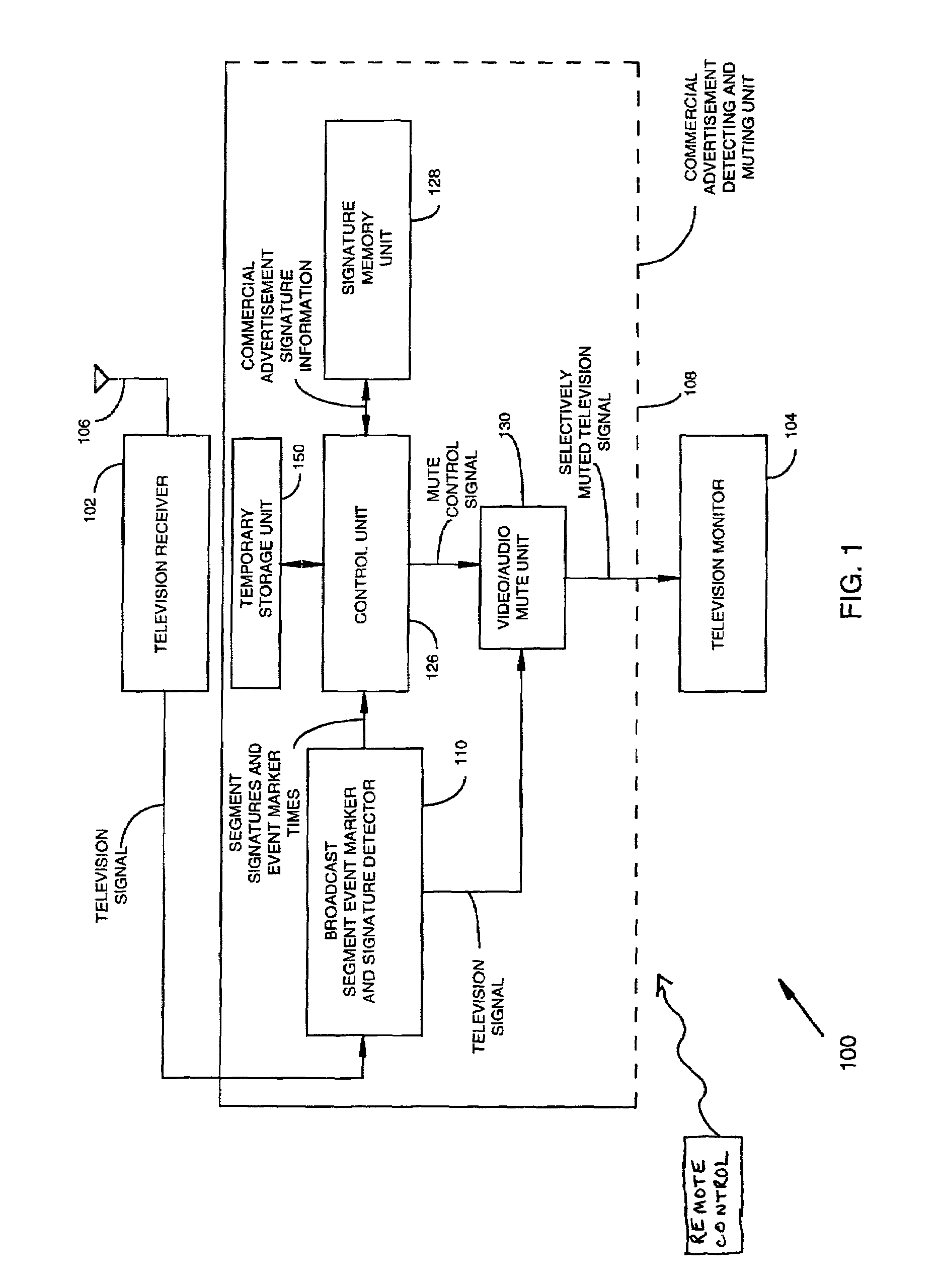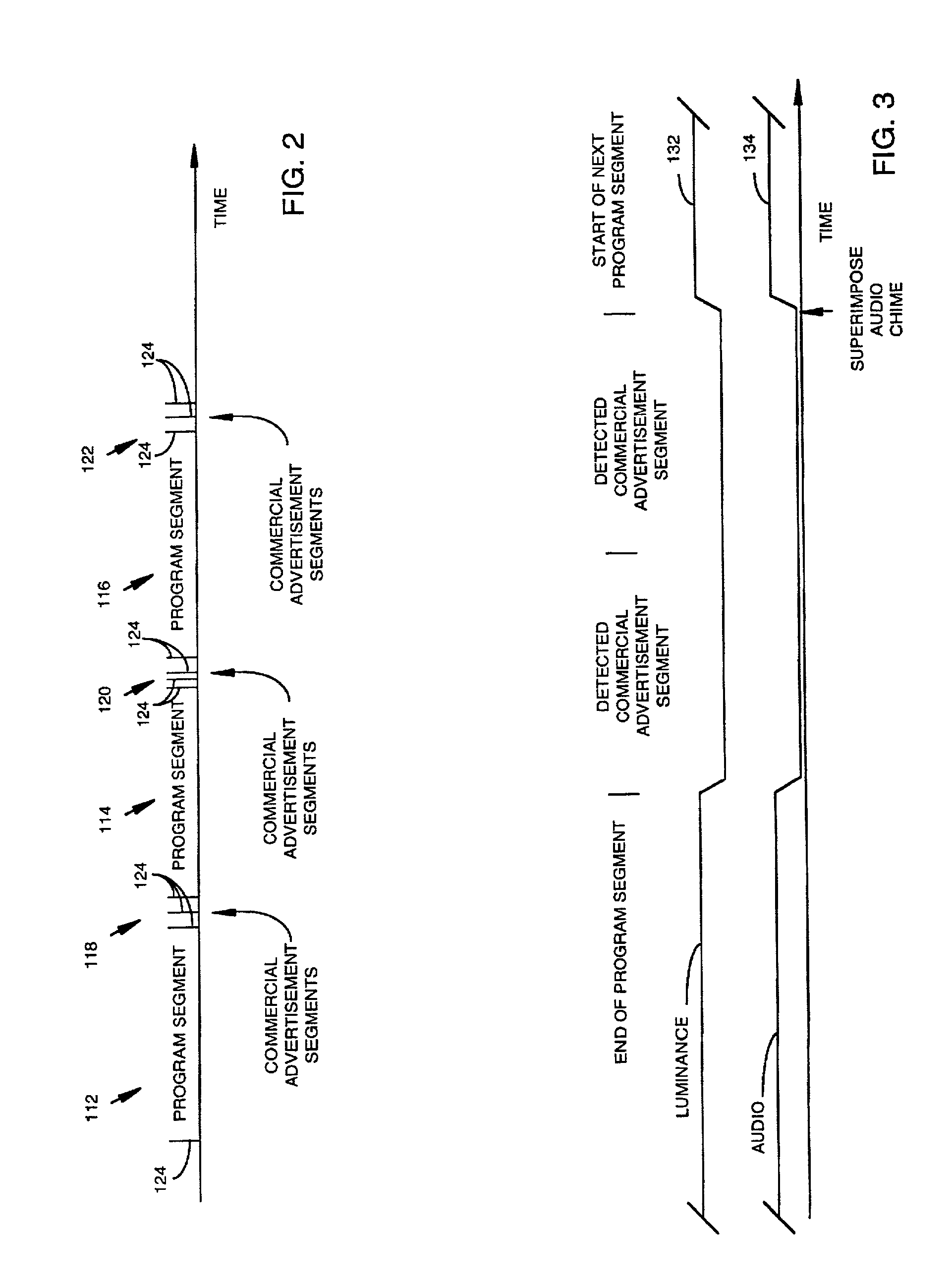Method and apparatus for controlling a video recorder/player to selectively alter a video signal
a video signal and video recording technology, applied in the field of television signal processing systems, can solve the problems of not operating in real-time during a received broadcast, system not operating in real-time to detect commercial advertisements within a received broadcast signal, and insufficiently effective and economical systems for automatic operation in real-time for muting, etc., to achieve the effect of quick development of a database of signatures
- Summary
- Abstract
- Description
- Claims
- Application Information
AI Technical Summary
Benefits of technology
Problems solved by technology
Method used
Image
Examples
embodiments
Television Set Embodiments
[0045]FIG. 1 illustrates a television set 100 having a receiver 102 and a monitor 104. Television receiver 102, which includes a television tuner, receives an input broadcast television signal from an antenna106 or from any other appropriate input source such as a coaxial cable input (not separately shown) and outputs a received television signal for eventual display by monitor 104. In this exemplary implementation, the received television signal is an analog NTSC signal including audio, luminance and chrominance components. In other implementations, the television signal is a PAL or SECAM signal or digital signal such as an HDTV signal. Monitor 104 displays the video portions of the television signal and plays the audio portions through speakers (not separately shown). Rather than routing the received television signal directly to the monitor for display, the television signal is first routed through a commercial advertisement detecting and muting system 1...
PUM
 Login to View More
Login to View More Abstract
Description
Claims
Application Information
 Login to View More
Login to View More - R&D
- Intellectual Property
- Life Sciences
- Materials
- Tech Scout
- Unparalleled Data Quality
- Higher Quality Content
- 60% Fewer Hallucinations
Browse by: Latest US Patents, China's latest patents, Technical Efficacy Thesaurus, Application Domain, Technology Topic, Popular Technical Reports.
© 2025 PatSnap. All rights reserved.Legal|Privacy policy|Modern Slavery Act Transparency Statement|Sitemap|About US| Contact US: help@patsnap.com



